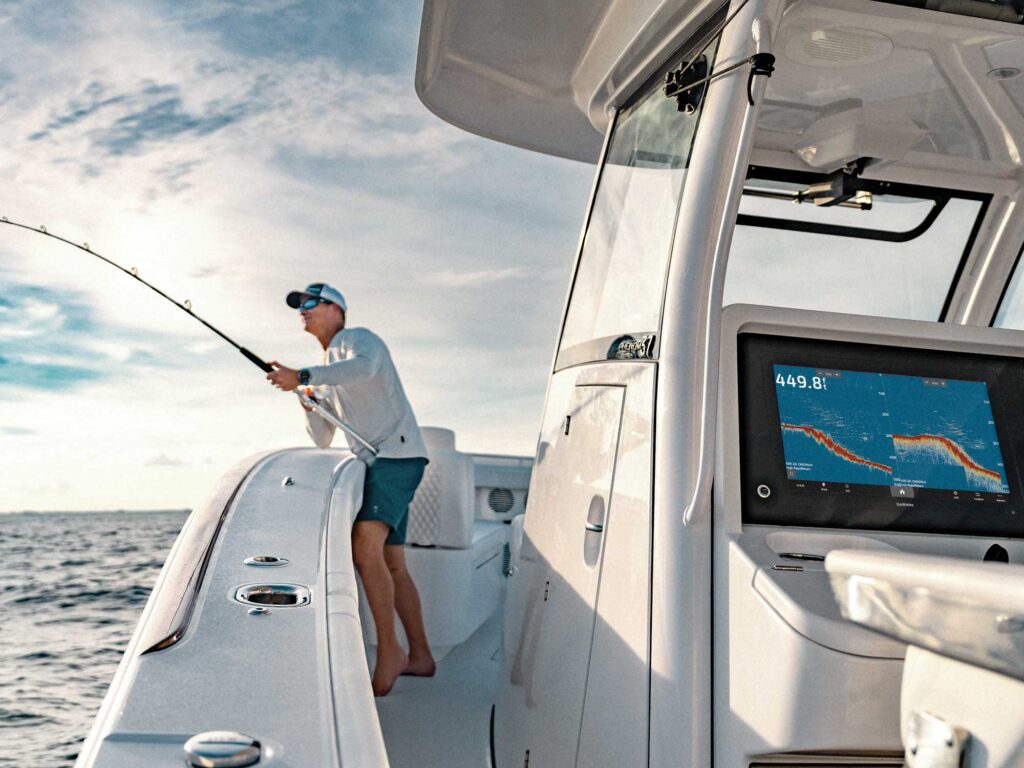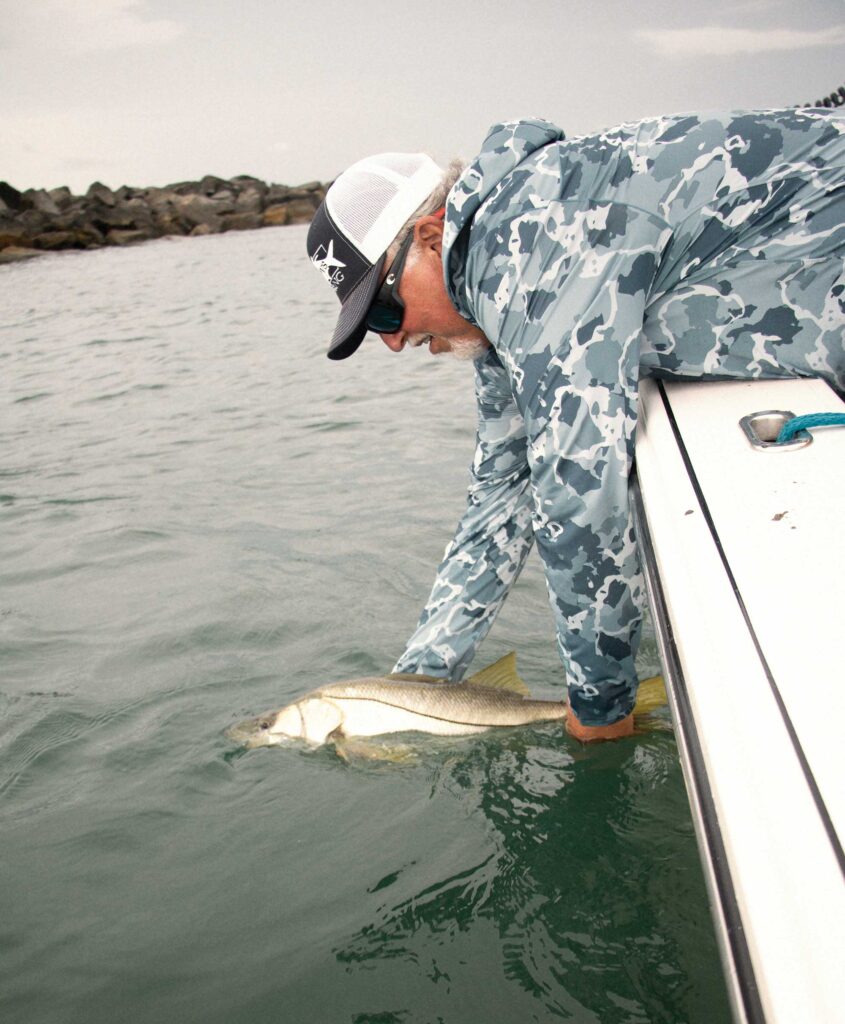
Underwater objects—natural or man-made, large or small—create rich saltwater habitats that act like magnets for marine life. Anglers refer to such habitat as “structure.” It’s a fitting moniker, as structure provides a foundation for saltwater food chains, hosting everything from shrimp, crabs and baitfish to structure-loving apex predatory fish.
Yet, not 100 percent of any structure area—be it a jetty, wreck or deep canyon ledge—holds fish. Boating anglers often need to sample different sectors to pinpoint the best fishing zones. These tend to shift from day to day or even hour to hour, depending on factors such as tide, current, wind and more.
Today’s marine electronics play pivotal roles in homing in on all kinds of structure. And as you will read, it is not just sonar systems that experts tap for this, but also advanced chart-plotting and trolling- motor functions to find and stay on concentrations of fish. To learn more, we talked with David Dunn, senior director of sales for Garmin Marine, and focused on three common types of saltwater structure stretching from inshore areas to far offshore.
Jetties and Bridges
Two of the most productive types of structure for inshore anglers are jetties and bridge abutments. These attract a wide range of gamefish. Depending on the region, species range from redfish, snook and tarpon to striped bass and calico bass.
Dunn points out that fishing these structure areas tends to be more horizontal than vertical fishing, so you need sonar systems that shoot horizontally. “I would start with the Garmin SideVu scanning sonar,” Dunn says. SideVu’s high frequency offers high-resolution imagery of fish and structure to the sides of the boat.
“SideVu’s true-to-life picture helps you get acquainted with the structure as you cruise alongside it, and it lets you find areas of the greatest fish concentrations,” he explains. “SideVu can also help you isolate which bridge abutments are holding the most fish.”
Garmin is not the only electronics brand offering a high-frequency side-scanning sonar system. Others include Humminbird’s Side Imaging, SideScan from Lowrance and Simrad, and Raymarine’s SideVision.
For the next step, Dunn switches to live sonar, specifically, Garmin’s LVS34 LiveScope Plus, which can easily see fish up to 80 feet from the boat. “I orient the LVS34 transducer in the Forward mode on my Garmin Force Kraken trolling motor to look for individual fish in real time,” Dunn reveals. “This lets me target individual fish on the jetty or abutment and become more efficient as an angler.”
Other live (aka forward-facing) sonar systems on the market include Mega Live Imaging from Humminbird and ActiveTarget from Lowrance and Simrad.
Read Next: Five Gamefish That Are Tough to Fight Around Structure

Wrecks and Reefs
High-resolution shaded-relief cartography—not sonar—serves as the first tool in Dunn’s quest to pinpoint fish concentrations on offshore wrecks, reefs and rock piles. He uses the relief-shading mode of the Garmin Navionics Vision+ charts in his Garmin chart plotter not just to study the structure, but also to look for adjacent anomalies that might hold fish. Other brands that offer high-resolution shaded-relief charts include C-Map, CMOR Mapping and Humminbird CoastMaster.
“Sometimes, I find more fish on a little rock or hard-bottom spot next to a wreck or a reef than on the main structure,” Dunn says. “The amazing detail in the relief shading gives me a good idea of all the areas where I want to look for snapper, grouper and other species.”
In Dunn’s case, the first “look” takes place with Garmin’s ClearVu down-scanning sonar. He scouts the structure and adjacent spots with ClearVu to figure out which areas are holding the most fish. Once he has a lay of the land, Dunn switches to live sonar in the form of his LiveScope XR with the transducer oriented in the Down mode on the Kraken trolling motor. The power of the LiveScope XR lets him target individual fish on wrecks and reefs at depths exceeding 300 feet while using the Kraken trolling motor in Anchor mode to hold the boat over the fish.
Using the live sonar also helps Dunn avoid certain fish such as goliath grouper, a protected species in Florida waters. Staying away from this species also helps prevent the goliath from inhaling a hooked fish.
Deep-Dropping
Deep-dropping for species such as tilefish, queen snapper and, on the West Coast, rockfish and lingcod takes place in depths from 600 to 1,500 feet or more, which can also be prime territory for daytime swordfish deep-drops. Again, Dunn starts with high-resolution shaded-relief charts to narrow down where he wants to look along the vast deep-ocean floor. In the upper Gulf of Mexico, for example, oil pipeline crossings in deep water can prove productive for species such as snowy and yellowedge grouper. On the West Coast, big rockfish and lingcod tend to dwell on the ledges of seamounts and canyons.
His next step is setting up a search with one of Garmin’s most powerful sonar systems—the GSD 28—with a minimum 2 kW transducer. This traditional up-and-down sonar system will also operate with a 3 kW transducer. The GSD 28 features a built-in AHRS (attitude and heading reference system) that electronically stabilizes the sonar image to compensate for boat motion in rough seas to better display the bottom and fish. What’s more, the GSD 28’s exclusive Rapid Return sonar feature is engineered to display echo returns six times faster than other high-power sonar systems, thus eliminating the frustration of waiting on super-slow returns, an annoyance that has been likened to watching paint dry.
Today, boating anglers have a bigger electronic arsenal than ever when it comes to homing in on structure. Choose your weapon.









